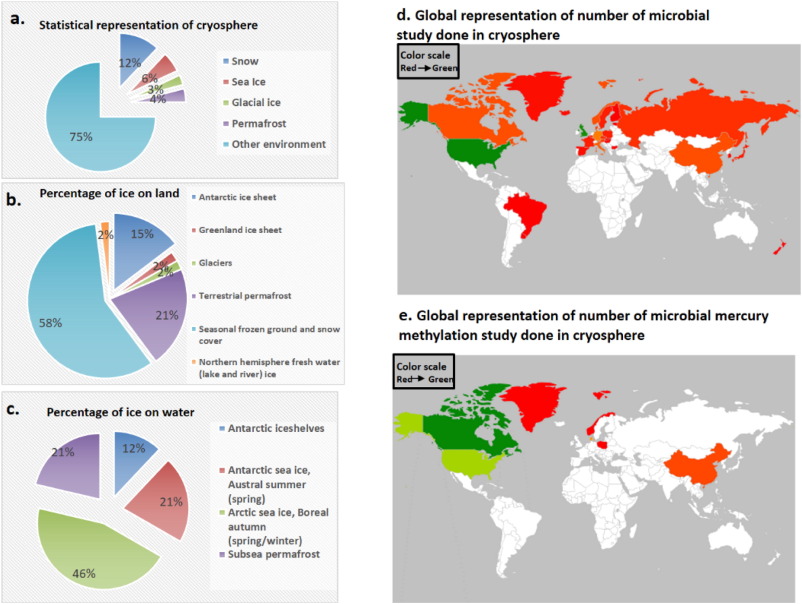
### Antarctic Enigma: The Distinctive Biochemical Survival Strategies of *Pseudomonas* sp. EW#7
#### Introduction
Antarctica frequently represents the utmost boundaries of life on Earth, characterized by its frigid surface and nearly subzero conditions. Among the remarkable revelations in polar microbiology, researchers have recently discovered complex biochemical adaptations of a *Pseudomonas* species flourishing in Enigma Lake, a water body covered in ice in Antarctica. This extraordinary bacterium, *Pseudomonas* sp. EW#7, exists in temperatures as low as 0.4°C, prompting inquiries into its survival in such extreme settings. New research led by Flaviana Di Lorenzo and her team from the University of Naples Federico II has illuminated the biochemical mechanisms that allow the bacterium to thrive and operate at near-freezing temperatures.
#### The Importance of *Pseudomonas* in Microbial Ecology
*Pseudomonas* is among the most adaptable bacterial genera globally. With over 300 species, these Gram-negative bacteria inhabit a diverse array of environments, ranging from soil and vegetation to aquatic ecosystems. Most species serve a saprophytic function, decomposing organic matter in their habitats, while some act as opportunistic pathogens affecting humans and plants alike. However, as studies delve into more extreme habitats, it becomes increasingly clear that *Pseudomonas* species can colonize challenging ecosystems, including those with high salinity, intense cold, and limited oxygen.
Antarctica is one such extreme environment, and Enigma Lake, with its constant ice cover and freezing waters, presents a particularly tough habitat. The identification of *Pseudomonas* sp. EW#7 underscores nature’s potential for microbial adaptation, offering scientists new opportunities to investigate extremophiles—organisms that thrive in some of Earth’s harshest conditions.
#### Biochemical Adaptations: Lipopolysaccharides and Membrane Integrity
Central to this study is the outer membrane of the bacterial cell, specifically its lipopolysaccharides (LPS). LPS is a vital element of the outer layer of Gram-negative bacteria, providing structural stability and shielding against environmental pressures. In *Pseudomonas*, the LPS comprises three primary components: the O-antigen, core oligosaccharides, and lipid A—which anchors the LPS to the outer membrane.
The research team extracted and analyzed these macromolecules from *Pseudomonas* sp. EW#7 at two distinct temperatures—20°C, a relatively warm lab environment, and 0.4°C, replicating the chilly water conditions of Enigma Lake. Initial scrutiny using methodologies like Maldi-Tof mass spectrometry and nuclear magnetic resonance (NMR) revealed no significant differences in the O-antigen or core oligosaccharides across the temperature conditions. The key breakthrough emerged when the team examined the lipid A segment of the LPS.
#### Lipid A Biochemical Modifications: Hydroxylation and Phosphorylation
It was discovered that in samples maintained at 0.4°C, lipid A experienced certain biochemical modifications not seen at the elevated temperature. Employing negative-ion Maldi-Tof mass spectrometry and molecular dynamics simulations, the study uncovered diminished hydroxylation and increased phosphorylation of fatty acids in the cold-adapted lipid A samples.
Hydroxylation generally entails adding hydroxyl groups (-OH) to fatty acids, while phosphorylation involves incorporating phosphate groups (PO₄³⁻). Remarkably, the research team found that less secondary hydroxylation occurred under colder conditions, which was accompanied by what they termed “hyperphosphorylation”—an increase in the addition of phosphate groups.
These biochemical transformations appeared essential for upholding the membrane’s fluidity, a critical factor for the bacterium’s survival in near-freezing temperatures. The cell membrane, primarily formed of lipid bilayers, risks becoming rigid and losing functionality as temperatures decline, complicating the cell’s interactions with its surroundings or the transport of molecules across the membrane. Nevertheless, these specific adaptations—reduced hydroxylation and increased phosphorylation—seemed to counteract this rigidity, allowing lipid A to stabilize the membrane in extremely cold environments.
#### A Unique Mechanism in Cold Adaptation
What is particularly intriguing is that the lipid A modification pattern in *Pseudomonas* sp. EW#7 suggests a distinct cold-adaptation mechanism that stands in contrast to previously researched cold-tolerant *Pseudomonas* species. For example, some other species often show enhanced hydroxylation to preserve membrane integrity in frigid conditions. The decreased hydroxylation and increased phosphorylation observed in *Pseudomonas* sp. EW#7 at 0.4°C indicate a new biochemical adaptation pathway, implying that various extremophiles may utilize diverse, context-specific strategies for survival.